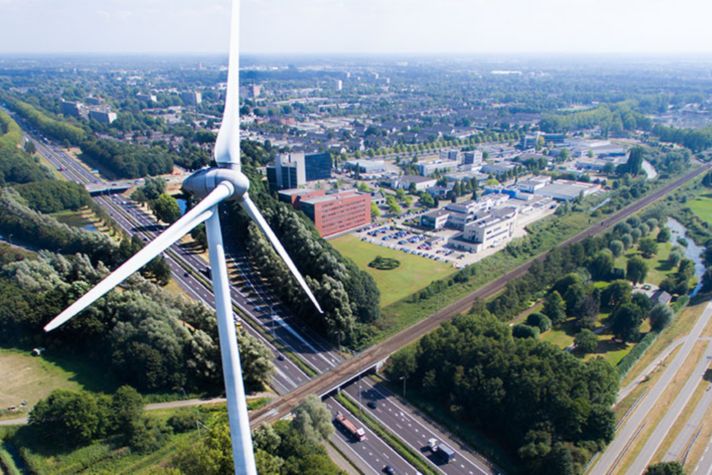You are browsing the product catalog for
- News
- Renewable Fuels Milestone: 50 Facilities to Power the Future of Fuels
Renewable Fuels Milestone: 50 Facilities to Power the Future of Fuels
With more renewable fuel production on the horizon, look back at the breakthroughs and what's ahead.
How can waste oil from french fries be used to make fuel that can power a plane?
That’s one of the big questions Honeywell teams answered by developing and bringing to market a process for producing sustainable aviation fuel (SAF) in 2007. Known as Ecofining, the process produces renewable diesel and SAF utilizing widely available materials like waste fats, oils and greases. Blended with conventional jet fuel, the use of SAF can reduce greenhouse gas (GHG) emissions by up to 80% compared to conventional fossil fuels.1
That technology has been used since 2013 to produce renewable diesel, and in 2016, the first refinery using Ecofining for SAF started production. Recently, Acelen Renewables selected Ecofining to produce SAF and renewable diesel using a blend of inedible seed and waste oils, which marks the 50th site to license Honeywell’s renewable fuels technologies.
These 50 sites have a combined capacity when functioning to produce more than 500,000 barrels per day of renewable fuel. Eight facilities are already in operation, and more than 40 licensed plants are slated to be operational by 2030.
Look back at some of the milestones so far:
It’s About the Journey: Reflecting on Early Breakthroughs
The development of Ecofining and other processes that have followed to expand the types of feedstocks that can be used for renewable fuels wouldn’t be possible without the many engineers, researchers, and inventors who have contributed to this space over the years.
So, what is it like to help pioneer first-of-its-kind technology? To find out, we caught up with some of our many Futureshapers who’ve contributed to renewable fuels breakthroughs.
Andre Defaveri is the director of sales and new business development in Latin America for our Energy and Sustainability Solutions business. With a background in chemical engineering, he helps bring renewable fuels to market.
“As engineers and scientists, we have the power to create, to transform and turn theory into reality,” Defaveri said. “Some decades ago in Brazil, ethanol as fuel was a dream. Now, you can use bioethanol in your cars, trucks and buses. Renewable fuels like SAF were another dream, and today are becoming a reality globally.”
Don Eizenga, a Honeywell UOP fellow, has supported renewable fuels development for more than 15 years. Eizenga oversaw the first design projects for the Ecofining process to be implemented at sites, and he led engineering teams who helped further the technology and obtain patents.
He said that his career so far at Honeywell has been defined by “all kinds of projects, and most importantly, all kinds of talented, skilled and experienced people collaborating and contributing to the success and opportunities for a new generation of engineers and scientists.”
Eizenga spoke of the “dynamic and challenging” experiences that came with following the renewable fuels projects from design to production.
“It was everything an engineer would want to do in a career to have supported these projects and having them successfully start up and operate,” Eizenga said.
Geoff Fichtl is a principal research and development engineer scientist who started his career at Honeywell in 2004. Fichtl was part of the Honeywell UOP teams comprised of engineers and researchers whose contributions informed designs of the first Ecofining production units, which now produce SAF and other renewable fuels.
“I have always been interested in technology to help combat climate change, which is why I wanted to be involved in renewables,” Fichtl said. “I liked that [renewable fuels] were very cutting-edge at the time and we were the first to do what we were doing. It was very exciting.”
He continued: “Looking back on being involved, especially in the first wave of commercializing Ecofining and renewable jet fuel, it’s one of the most satisfying things about my entire career. But it’s just what I wanted to work on – something with an environmental aspect."
A Look into the Future of Fuels
Building on our decade of SAF production experience, our teams have developed additional pathways to produce renewable fuels.
For example, electrofuels, also known as eFuels, are a class of synthetic fuels that combine green hydrogen (hydrogen produced from renewable energy and water) and carbon dioxide (CO2) to produce eMethanol. This technology can convert eMethanol to eSAF, which can reduce greenhouse gas emissions by 88% compared to conventional jet fuel.2
We’ve also developed a technology to convert ethanol (from corn, sugarcane, sorghum or other crops) into renewable jet fuel.
Having more than one pathway to produce renewable fuels is important given the aviation industry’s goal to achieve net-zero carbon emissions by 2050. Multiple feedstocks are needed due to the expected continued growth in aviation. SAF is expected to contribute around 65% of the emissions reduction needed for the aviation sector to reach its net-zero goal, according to the International Air Transport Association.
And for future inventors and innovators passionate about solving some of the world’s toughest sustainability challenges – there's never been a better time to get involved.
“Talk to people about what you’re interested in, and don’t be discouraged if an idea you have today doesn’t seem like the right fit now – in a space like sustainable technologies, things move really fast, and ideas that may seem out-of-the-ordinary may end up center-stage down the line,” Fichtl said.
Renewable Fuels: A Glossary
Sustainable Aviation Fuel: Also called SAF for short, it’s made from a variety of sources (or feedstocks), such as used fats, oils and greases, and other waste. Honeywell has developed the technologies Ecofining and ethanol-to-jet (which converts ethanol into renewable jet fuel) as pathways to producing SAF.
Renewable Diesel: When produced with the Ecofining process, renewable diesel emits up to 80% less greenhouse gas emissions than conventional petroleum-based diesel.
Electrofuels: Also known as eFuels, this is a class of synthetic fuels. Electrofuels are made by combining green hydrogen (hydrogen produced from renewable energy and water) and carbon dioxide (CO2) to produce eMethanol, which can be converted into eFuels.
Renewable Fuels: An overarching category of fuels produced from renewable resources, including the above.
Want to learn more? Listen to this podcast episode about pathways to develop and scale renewable fuels.
1 GHG reductions are based on LCA analyses conducted at Michigan Technological University under the direction of Dr. David Shonnard.
2 Reduced GHG emissions is based on UOP carbon intensity analysis, derived from a 3rd-party study of methanol production from green hydrogen and CO2 captured from biomass processing, in comparison to fossil fuels.
Copyright © 2024 Honeywell International Inc.





